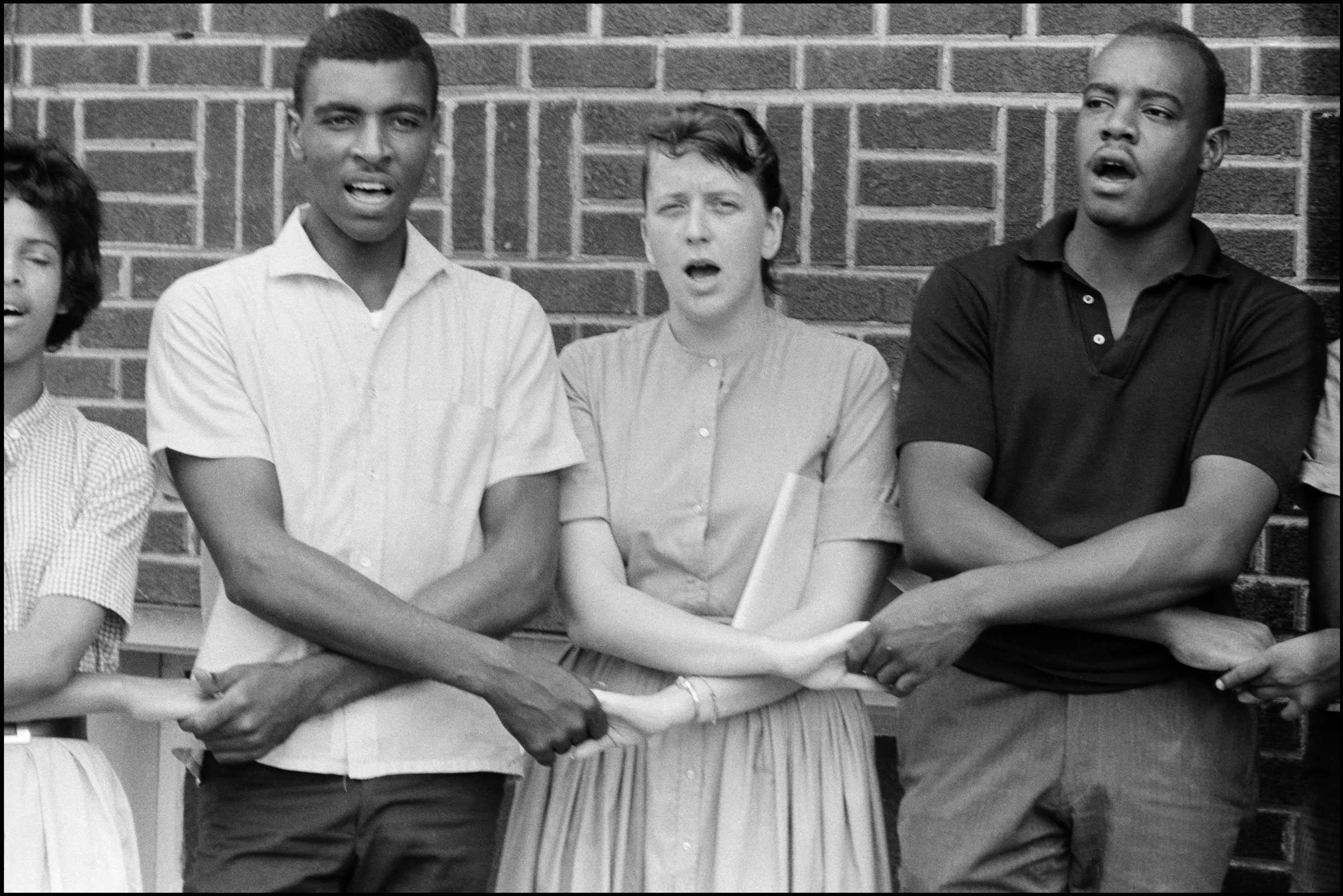Chapter 3
Protesting and Marching for Civil Rights
African Americans resisted segregation through individual and collective action. Privately, they attended to their families, their communities, and their lives. Publicly, they boycotted, marched, and protested, forcing businesses and cities to desegregate.
Organizations such as the Southern Christian Leadership Conference (SCLC) and the Student Nonviolent Coordinating Committee (SNCC) provided training and funding for desegregation efforts.
What Was the Student Nonviolent Coordinating Committee?
SNCC staff members in Atlanta, 1963
Constancia Romilly outside SNCC headquarters
Ella Baker from the Southern Christian Leadership Conference invited students involved in the sit-in movement to form an independent, student-led civil rights organization. Meetings in April and May of 1960 resulted in the creation of the Student Nonviolent Coordinating Committee (SNCC), with Marion Barry as its first chairman. SNCC was an independent interracial group, and its members led Freedom Rides and organized voter registration drives in the South.
Who Was Ella Baker?
Ella Baker
Ella Baker was one of the founders and guides of the Student Nonviolent Coordinating Committee. An important strategist and grassroots organizer during the Civil Rights Era, Baker began her work as an activist with the NAACP and with SNCC.
In April and May of 1960, Baker invited students involved in the sit-in movement to form an independent, student-led civil rights organization, resulting in the creation of the Student Nonviolent Coordinating Committee. An independent interracial group, SNCC led Freedom Rides and organized voter registration drives in the South. Baker worked mostly behind the scenes in a career that spanned five decades.
Check to SNCC from James Baldwin
What Did SNCC Do?
Now! SNCC poster, ca. 1965
SNCC-organized demonstration at a swimming pool in Cairo, Illinois, 1962
SNCC employed tactical nonviolence in pursuit of civil rights, economic opportunity, and political power for African Americans.
Bob Moses was an architect of SNCC’s Freedom Summer. SNCC engaged communities with voter drives, voter registration schools, and integrated busing in the most dangerous areas of the Deep South.
SNCC’s activities provoked violent reactions, leading some members to embrace more militant positions. SNCC’s Stokely Carmichael’s call for “Black Power” emerged after an attempt on James Meredith’s life during Meredith’s March Against Fear in June 1966.
SNCC bumper sticker, 1962–1965
